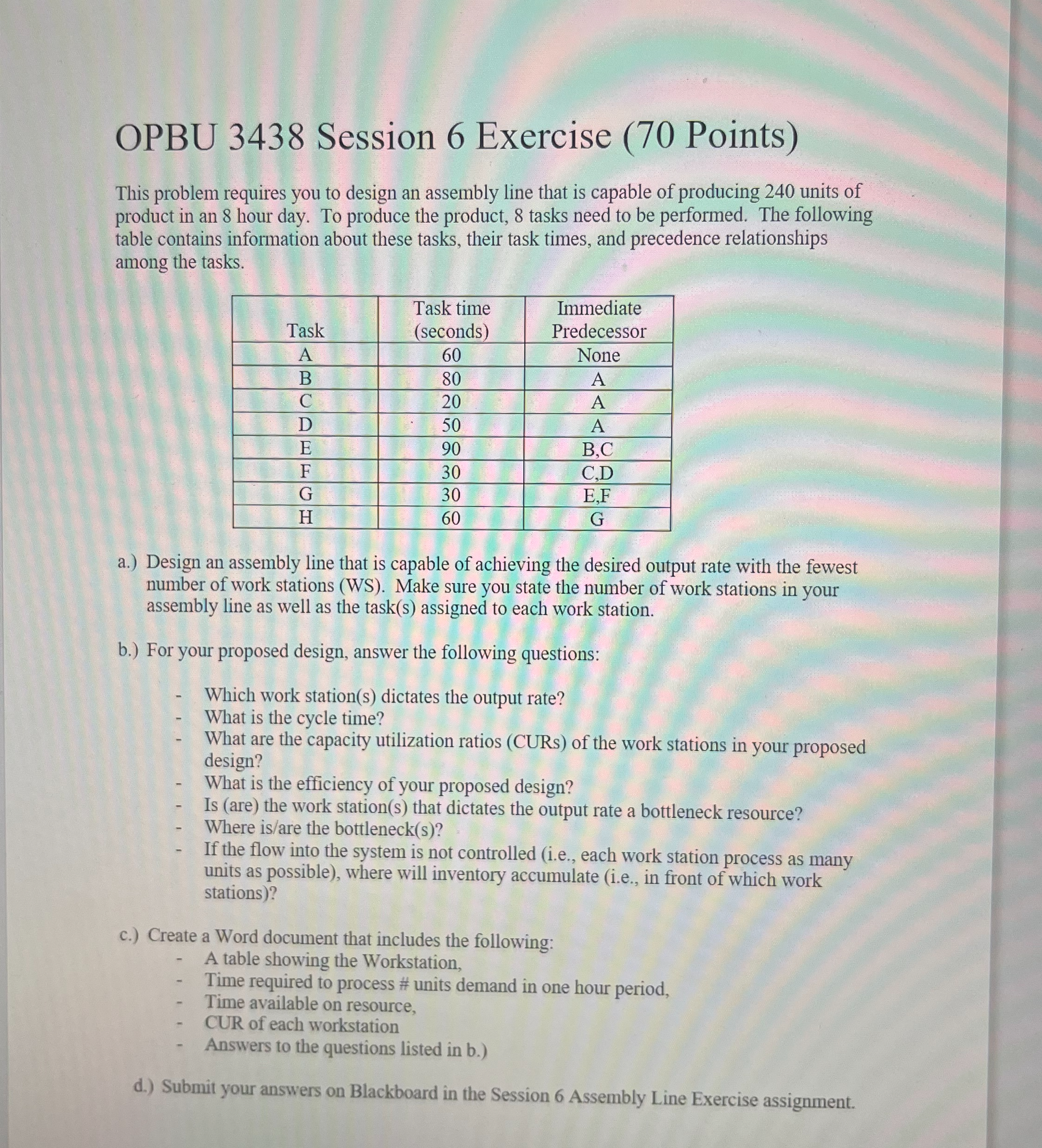Answered step by step
Verified Expert Solution
Question
1 Approved Answer
I need my homework checked, but Chegg won't let me upload more than one image. Please check my answers and correct any that are wrong.
I need my homework checked, but Chegg won't let me upload more than one image. Please check my answers and correct any that are wrong. Here's the answers that I have:
Part A
total time convert hrs to sec: seconds
cycle time available time during day unites require per day
therefore, the max time for each work station is seconds
Work Station WS: Task A sec Task C sec seconds idle:
WS: Task B sec idle:
WS: Task D Task F sec idle
WS: Task E sec idle
WS: Task G Task H sec idle
Part B Answers
work station w the highest total task time dictates the output rate, so Work Station
cycle time seconds
capacity utilization ratios CUR: task timecycle time multiplied by
WS
WS
WS
WS
WS
Efficiency: sum of task times # of WScycle time
Efficiency:
Yes
Work Station is the bottle neck bc it has the longest processing time
Inventory will accumulate before WS because it has the longest processing time and will slow down the system's flow.

Step by Step Solution
There are 3 Steps involved in it
Step: 1

Get Instant Access to Expert-Tailored Solutions
See step-by-step solutions with expert insights and AI powered tools for academic success
Step: 2

Step: 3

Ace Your Homework with AI
Get the answers you need in no time with our AI-driven, step-by-step assistance
Get Started


